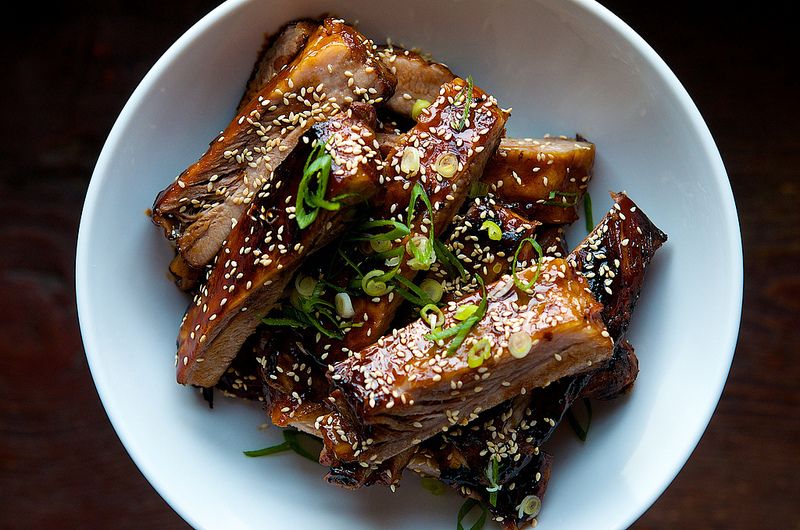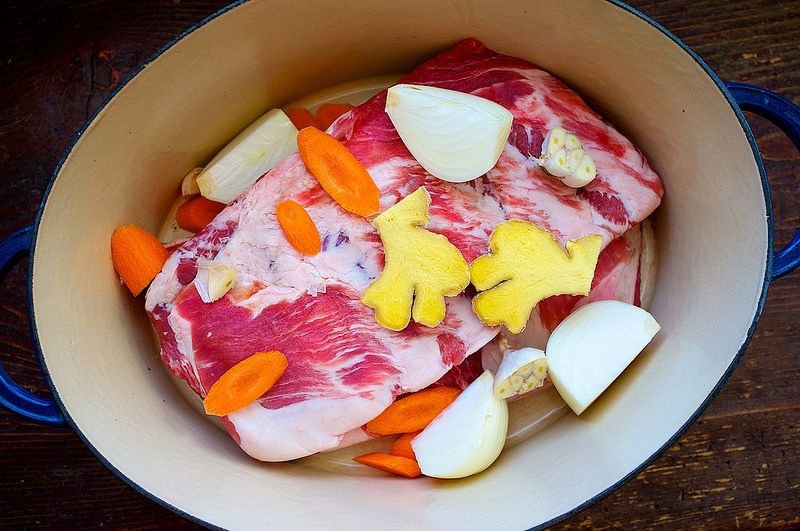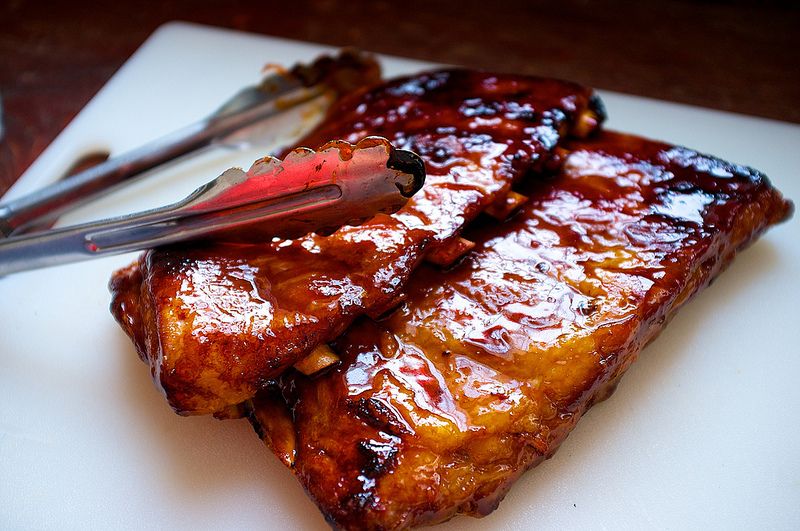Sunday Dinners comes to us from our own chef/photojournalist/farmer/father figure Tom Hirschfeld, featuring his stunning photography and Indiana farmhouse family meals.
Today: 5 tips for reading any recipe that will boost your confidence and lower your stress levels in the kitchen. Plus, one killer recipe for Chinese Style Hoisin Sticky Ribs to inspire you to tackle even the trickiest recipe.

Chef Leichte spun on the balls of his feet. A millisecond ago he was heading forward, and I was following him. Now we are face to face, and he pokes my chest with his finger. "Commit!" he says in a raised voice, his chef's toque rising from his head and towering above me like the leaning Tower of Pisa. "Quit asking all these questions and cook! Commit to the recipe; if it fails, we will fix it, but realize you will probably learn more from your mistakes than if I coddle you through the process.”
Not one of the other students likes Chef Leichte. He is a hard-ass -- and sometimes just an ass -- but he knows what he is doing. Experience has his back, and he has spent his time in the trenches. Maybe I like him because I am older; I had tennis coaches like him, and he graduated from the Culinary Institute of America, which in my opinion is the Harvard of culinary schools. He has my respect. I do what he says and go back to my station, prep tray and recipe in hand. It's a culinary school recipe, laminated in plastic, with ingredients by weight on one side and the method on the other. It is devoid of any headnote -- no quirky little story to give the recipe a personal perspective. It’s all business, but I want to read it before I start cooking. I want to think it through, find my answers, and have a set plan before I even cut a carrot, let alone turn on the stove.

If a recipe is written reasonably well, it will offer lots of information to answer most cooks' questions. And, even if it doesn’t have an obvious answer, often a little deductive reasoning is the solution to all worries. Take these ribs for example. The ingredients list isn’t long or exotic, but the flavor is, and the recipe uses two cooking methods. It involves a considerable amount of time, but if you read through it, you will see that it can be done in stages over a few days. The poaching stage can be done while you are watching TV in your jammies on a Sunday afternoon, and the ribs can be left to cool in the braising liquid, then stored in the fridge until you want to heat them up for a 30-minute weeknight meal (they are also great for a Sunday dim sum brunch).
If you cook much Chinese food then you know these are staple ingredients that are used in almost every Chinese recipe, and many other Asian recipes too. Today, these ingredients are ubiquitous and readily available. I live in the Indiana countryside, and these ingredients are even available at my small town's grocery store, in small, inexpensive quantities. After all, it’s not like the recipe calls for fresh lotus root tied into tiny Shibari bondage knots. As such, the notion of substitutions shouldn’t even cross your mind. But, if it did, you could eighty-six the carrots and onions for a green onion or two, along with the remainder of the braising ingredients. After that, each ingredient plays an important role, so substitute at your own peril and learn from your mistakes.

5 Tips for Reading Recipes
1. Read the recipe twice before cutting anything or even turning on the stove.
2. Break up the recipe into sections: prep, method and finishing.
3. Use common sense if you need to make substitutions and make your decision on what substitutions you will make well before you start cooking. Soy sauce would make for a difficult sub but Chinese rice wine, on the other hand, has many: sherry, sake, and vermouth.
4. If you are confused about something in the recipe get online and look it up. Researching the information yourself is the best way to learn, rather than relying on someone to give you the answer. Often when researching your answer you will learn lots of other things along the way.
5. Pay attention to what happens in the recipe and what happens on the stove. If they differ, ask yourself why. Is it something you did, or something the recipe failed to do? Make a mental note of it and remember your firsthand experience for the next time. If every step goes perfect, and you are paying attention, it will be much easier to replicate next time you want to cook the same recipe.

Chinese Style Hoisin Sticky Ribs
Serves 2 to 3
1 rack of ribs, cut in half
1 onion, peeled and quartered
1 carrot, peeled and sliced into disks
1 thumb of ginger, about one inch, sliced
1 head of garlic, sliced across the cloves in half
1 cup tamari soy sauce, or your favorite brand
Water
See the full recipe (and save and print it) here.
Photos by Tom Hirschfeld/Bona Fide Farm Food





See what other Food52 readers are saying.